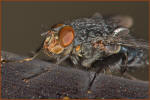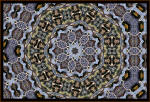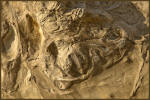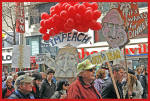
NGC 2264, a star-forming nursery in the constellation Monoceros. About 7 light-years in length, NGC 2264 is approximately 2,300 light-years from us, 2025

NGC 2359, an emission nebula in the constellation Canis Major (Big Dog). NGC 2359 is nearly 12,000 light years away, 2025

SH2-274, a planetary nebula in false color about 1,500 light-years from us. A planetary nebula is the remains of a star that reached the end of its life, the gases have expanded around the central star, 2025

The iconic M81 galaxy contains around 250 billion suns and was discovered in 1774. 12 million light years from us, it's located in the constellation Ursa Major, or the big Bear.

This group of three galaxies is about 35 million light-years from Earth. The spiral galaxies are M65, M66, and NGC 3628.

M63, the Sunflower Galaxy, lies about 27 million light-years from Earth and contains about 400 billion stars, with a radius of 49,000 light-years, 2025

SH2-202, nebulosity in SHO (false color). Located between Perseus and Camelopardalis, 2024

Messier 78, a reflection nebula in the constellation Orion. about 1,350 light-years from Earth, 2024

NGC 2403, a spiral galaxy about 8.2 million light-years from Earth in the constellation Camelopardalis. Galaxies contain hundreds of billions of suns and there are hundreds of billons of galaxies that we know of, 2024

LDN 1621 & 1622, dark nebula located in the Orion B molecular cloud complex, LDN 1621 is smaller than LDN 1622. Both nebulae are about 500 light years away, 2024

IC 2169, a reflection nebula in the constellation Monoceros, 2024

The Orion Nebula (M42) is a large star-forming region in our galaxy, about 1,344 light-years from Earth and approximately 3 million years old, 2025

SH2-185, reflection & emission nebula in the Constellation Cassiopeia, about 10,500 light years from Earth, 2024

SH2-261, in the constellation Orion about 3,300 light-years away, 2024

SH2-188, appearing almost like a shrimp this nebula is in the constellation Cassiopeia, 2024

LDN 1458, clouds of dust and gas that block or dim the light of stars and other objects, 2024

Barnard 11, dark nebula in the constellation Camelopardalis, 2024

LDN 1584, also known as Barnard 31, a few images to the left. This is my first image with a mono camera, 2024

VdB 152 & LDN 1217, a reflection nebula about 1,300 light-years from Earth in the constellation Cepheus, 2024

LBN 667 in false color (SHO or sulfur, hydrogen & oxygen). An emission nebula in the constellation Cassiopeia at a distance of about 7,500 light-years a way, 2024

SH2-205, an emission nebula near the border of the constellation Perseus, 2024

SH2-170, in between Cassiopeia and Cepheus, 7,500 light-years from Earth, 2024

IC 342, about 10 million light-years from us. Galaxies are like island universes, there are at least hundreds of billions with many consisting of hundreds of billions of stars as well as dust, star clusters, nebula and distant solar systems, 2024

SH2-173, 8,800 light-years from Earth, this emission nebula is in the constellation Cassiopeia, 2024

NGC 7023, the Iris Nebula, a bright reflection nebula in the constellation Cepheus about 1,300 light-years from Earth, 2024

NGC 7635, also known as the Bubble Nebula in the constellation Cassiopeia. 11,090 light-years from earth, with a radius of 3.5 light-years, 2024

LDN 1272, an emission nebula in between Cassiopeia and Cepheus, 2024

Stars, Stars, Everywhere--the Double Cluster in Perseus, 2024

Fish Head Nebula in the constellation Cassiopeia, about 6000 light-years from Earth, 2024

NGC 7293, also known as the Helix Nebula. A planetary nebula, the low-mass star's death creates the expanding gases. 650 light-years from Earth in the constellation Aquarius, 2024

IC 5146, an emission and reflection nebula in the constellation Cygnus, located about 2,500 light-years from Earth, 2024

A second version of NGC 6820 with the star cluster NGC 6823 using a different narrowband filter. The planetary nebula LAN 21 can be seen in the lower left corner, 2024

LDN 1273, a dark nebula near the constellations of Cepheus and Cassiopeia, 2024

SH2-157, is an emission nebula located about 11,000 light-years away in the constellation of Cassiopeia, 2024

Hickson 93, a galactic group far, far away. Pause to consider that the light the camera captured left these galaxies around 265 million years ago, long before humans, mammals and even dinosaurs appeared on Earth, 2024

LDN 1124, a dark nebula in the constellation Cepheus, 2024

The well-known M51 galaxy (Whirlpool Galaxy) is some 30 million light years from us and is apparently merging with a much smaller galaxy, 2024

M16, the Eagle Nebula, was discovered by Jean-Philippe de Cheseaux in 1745–46. It's about 5.5 million years old, at a distance of about 7000 light years, 2024

NGC 6820, nebulosity and an open star cluster about 6,000 light-years from earth, 2024

M20, the Trifid Nebula. In the constellation Sagittarius, over 4000 light-years from Earth 2024

SH2-115, an emission nebula in the constellation Cygnus. The little object to the lower left is the planetary nebula SH2-116. SH2-115 is about 9,630 light-years from Earth, 2024

M15 is a globular star cluster in our own Milky Way. Globulars are mostly located above and below the central bulge of our galaxy. M15 is over 32,000 light-years from earth and is thought be about 12 billion years old, 2024

Star cluster NGC 6939 lies around 4000 light-years away in our Milky Way galaxy, while NGC 6946, the Fireworks Galaxy, is about 15 million light-years fron us, 2023

NGC 281, the Pacman Nebula, is an emission nebula in the constellation Cassiopeia, about 9,500 light-years from earth, 2023

IC 434, the Horsehead Nebula, a bright emission nebula in the constellation Orion approximately 1,500 light-years from Earth at an apparent magnitude of 7.3, 2024

NGC 2175, a star cluster and diffusion nebula
located about 6,350 light-year from Earth, 2024

M106, a galaxy located about 23.7 million light years from Earth. Also included in the photo are several smaller and fainter objects, all island universes (galaxies)--each containing hundreds of billions of suns, 2024

M86 and Markarian's Chain. This cluster of distant galaxies, each one containing billions or hundreds of billions of suns, lies around 50 million light-years from us, April 2024

The Cave Nebula, SH2-155 is a diffuse nebula within a larger nebula complex containing emission, reflection, and dark nebulosity in the constellation Cepheus, located about 2400 light-years from us, 2023

The Wizard Nebula, NGC 7380. This emission nebula lies about 7,200 light-years from us and was discovered in 1787 by the German astronomer Caroline Herschel, 2023

NGC 7822, a star-forming region in the constellation Cepheus, thought to be about 2900 light-years from Earth, 2023

M45. popularly known as the Pleiades or the Seven Sisters, is an open cluster of stars at a distance of 444 light years. The nebulosity surrounding the stars was once thought to be remains of the nebula that formed these suns, but now astronomers believe it is from an unrelated dust cloud, 2023

NGC 1491, a bright emission nebula in the constellation Perseus, about 9,800 light-years from Earth, 2023

NGC 1499 is an emission nebula located about 1000 light-years from Earth, also known as the California Nebula in the constellation Perseus, 2023

IC 5070 (Pelican Nebula), nebulosity in Cygnus, 2023

A gasous region within IC 1396, 2,400 light years from Earth, 2023

M13, the great cluster in the constellation Hercules, 22.2 thousand light-years from Earth, 2023

The Veil Nebula, remnant of a supernova explosion. 1,470 light-years from Earth, 2023

The Soul Nebula, IC 1848, an emission nebula in the constellation Cassiopeia. 7,500 light-years from earth, 2023

Sh2-132, the Lion Nebula. Emission nebula in Cepheus about 11,000 light-years from Earth, 2023

Rosette Nebula, a giant molecular cloud in the Monoceros region of the Milky Way Galaxy.
5,219 light-years from Earth, 2023

SH2-296 Emission Nebula, about 3,500 light-years from Earth, 2023

M81 is about 11.8 million light-years from Earth. These galaxies are part of what's known as the Local Group, 2023

Globular star cluster M3. This cluster is about 34,000 light-years from earth and contains about 500,000 suns. It's believed to be over 11 billion years old, 2023

M101, also known as the Pinwheel Galaxy, is about 21 million light-years from Earth and contains about 1 trillon suns, 2025

NGC 7000 is an emission nebula in the constellation Cygnus the Swan, a region rich with both large and small nebula. NGC is about 2,500 light-years from Earth in our own Milky Way galaxy, 2023

Nebulae NGC 1893 & IC 405 in the Constellation Auriga
NGC1893 is about 12,400 light-years from Earth. IC405 is about 1,500 light-years from Earth, 2023

M42 Nebula, The Great Nebula in Orion.
1,344 light-years from Earth, 2022

M31 Galaxy, Our closest galactic neighbor in the constellation Andromeda.
2.5 million light-years from Earth, 2022

M33 Galaxy, the Triangulum Galaxy.
2.73 million light-years
from Earth, 2022

SH2-190 (The Heart Nebula)
7,500 light-years from Earth, 2023

The Milky Way from Rockpile Road, 2016







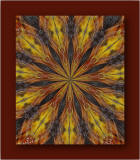

















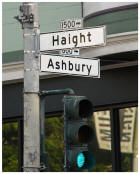



















_small.jpg)





















